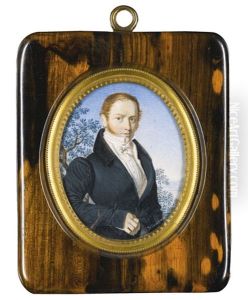Ignaz Joseph Weidlich Paintings
Ignaz Joseph Weidlich was a notable figure in the world of art, particularly in the realm of engraving and printmaking during the late 18th and early 19th centuries. Born in 1754, his contributions to art were marked by a combination of technical skill and artistic vision, which allowed him to capture both the complexity and simplicity of the subjects he chose to depict. Weidlich's work is characterized by its detailed and precise lines, reflecting the high standards of craftsmanship that were expected of artists during this period.
Throughout his career, Ignaz Joseph Weidlich engaged with a variety of subjects, including portraits, landscapes, and allegorical scenes, showcasing his versatility as an artist. His engravings not only served as works of art but also as important documents of cultural and historical significance, capturing the essence of the era's social and political life. Weidlich's ability to imbue his works with a sense of depth and texture made his engravings highly sought after by collectors and art lovers alike.
Despite the acclaim he received during his lifetime, Ignaz Joseph Weidlich's name is not as widely recognized today as some of his contemporaries. Nevertheless, his contributions to the field of engraving and printmaking have left an indelible mark on the art world, influencing subsequent generations of artists. Weidlich passed away in 1820, but his legacy lives on through his surviving works, which continue to be studied and admired for their technical excellence and artistic beauty. His life and career remain a testament to the enduring power of visual art to capture and convey the complexities of human experience.

